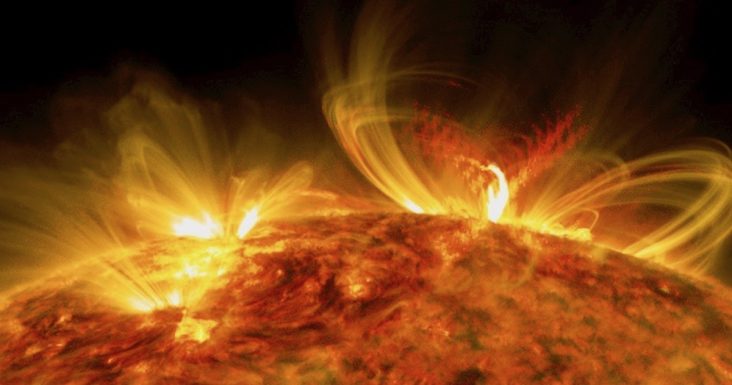Arkansas farmers have avoided solar flare disruptions
by June 13, 2024 11:28 am 152 views

Richard Carrington and Richard Hodgson were studying sun spots when a phenomenon happened that had never been observed by humans. Working independent of each other, the two scientists documented evidence of a solar flare on Sept. 1, 1859, according to NASA.
Solar flares had little impact on the world in which Carrington and Hodgson lived, but in the modern era flares can impact technology, power grids and other systems including agriculture. Farmers in the northern U.S. and parts of Canada reported in early May that solar flares affected GPS on farm equipment, and it may be a wide ranging issue until next year.
The sun is at the peak of its 11-year activity cycle. The solar maximum is marked by an increase in sunspots, which are associated with coronal mass ejections, or CMEs, which can blast the earth with electromagnetic radiation, including X-rays and extreme ultraviolet radiation.
On May 8, the sun spewed three CMEs that hit the earth on May 10. The most powerful flares to hit early since 2005, they generated the aurora borealis that could be seen as far south as Puerto Rico. The solar max could last until the end of 2025, according to the National Oceanic and Atmospheric Administration, or NOAA.
Farmers in Canada, Minnesota and the Dakotas reported tractor malfunctions with their usually precise GPS systems being yards off. A farmer in South Dakota had a tractor that traveled in circles instead of orderly rows.
Jason Davis, assistant professor and extension specialist in remote sensing and pesticide application with the University of Arkansas, said nearly all row crop farmers in Arkansas rely on some type of GPS system for their tractors. And while farmers up north were affected, Davis hadn’t heard any similar reports in Arkansas.
CME’s can affect GPS-dependent equipment in two ways. The radiation can disrupt the ionosphere, distorting signals from GPS satellites, meaning receivers can’t calculate positions accurately.
“During a severe space weather storm, these errors can increase to tens of meters or more,” according to NOAA’s Space Weather Prediction Center. “Dual frequency GPS systems can provide position information accurate to a few centimeters. In this case the two different GPS signals are used to better characterize the ionosphere and remove its impact on the position calculation. But when the ionosphere becomes highly disturbed, the GPS receiver cannot lock on the satellite signal and position information becomes inaccurate.”
The CMEs can also cause radio blackouts in certain frequency ranges. Farm equipment GPS systems rely on two systems; signals from satellites, but also ground-based calibration from radio-based real-time kinematic, or RTK, GPS systems. The satellite and ground systems work together to ensure navigational accuracy.
“We have a delicate network of communication from the hardware in our fields to both satellite constellations and ground-based correction services,” Davis said. “Those delicate networks can easily be influenced by electromagnetic radiation. In the case of solar flares that’s the introduction of the variance.”
It doesn’t take much of a variance to render a crop unprofitable.
“If you introduce a 1% error on the scale of 1,000 or 10,000 acres, that results in a significant cost,” he said, due to misplaced seed, herbicides or fertilizers. “The loss of access to system for a few minutes is one thing but to lose it for a couple of days could mean a huge added cost.”
Davis’ work is heavily invested in GPS-equipped tools such as drones. So far, none of the solar storms have affected his work.
“We count on a certain degree of accuracy when collecting data for our work,” he said. “When the RTK network is down, we don’t fly.”
